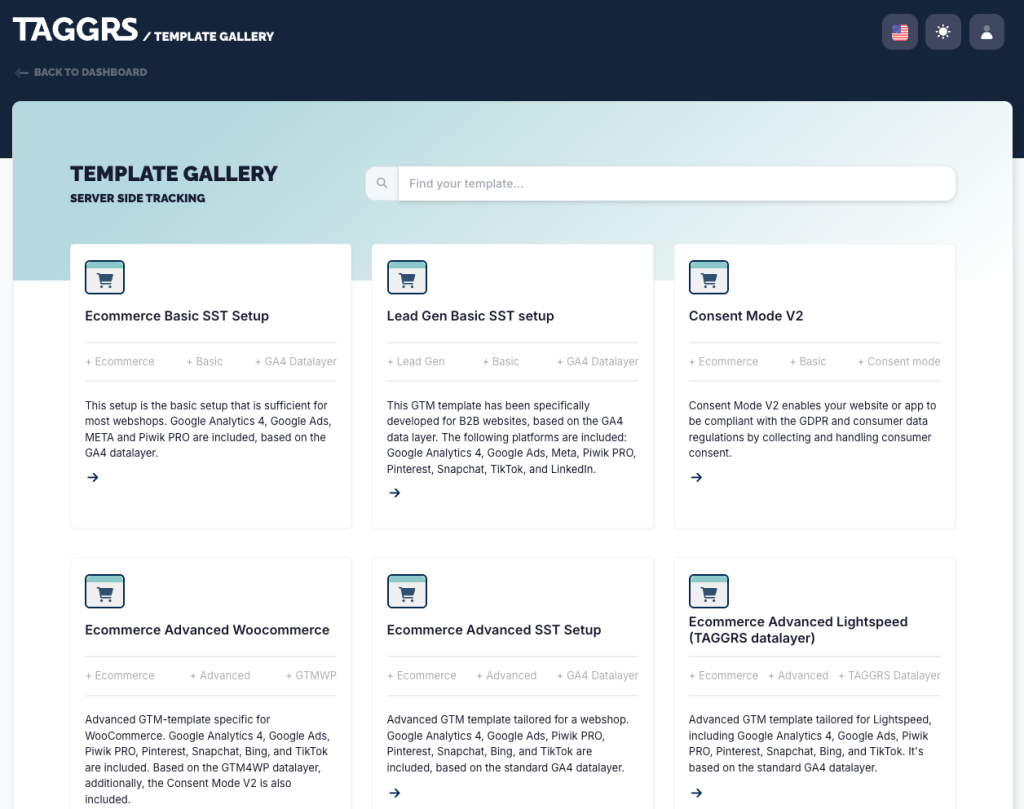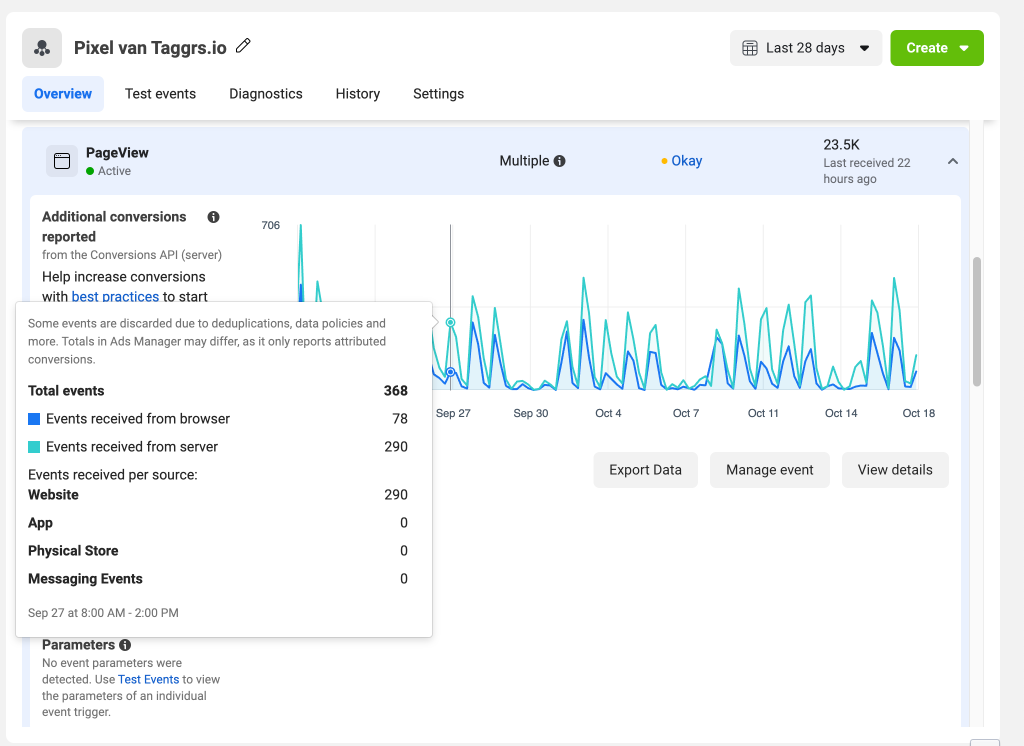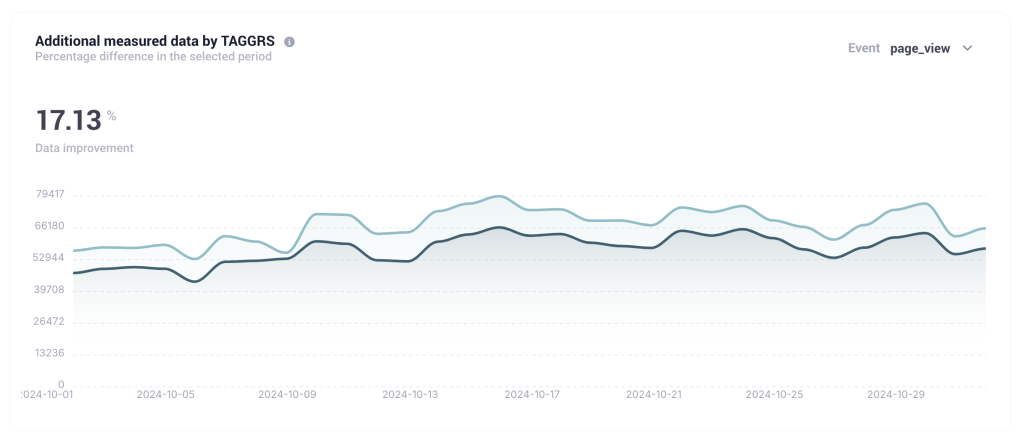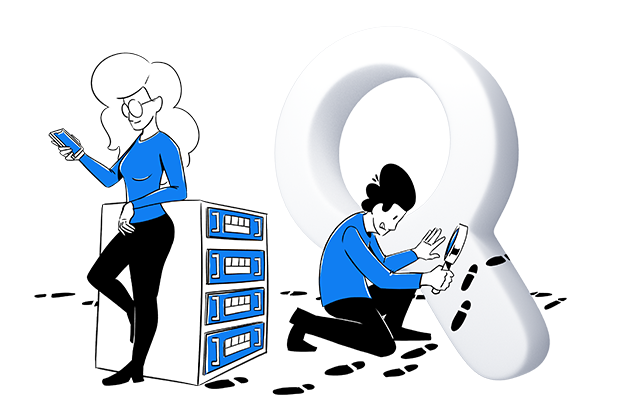Alternatives to client-side tracking, such as server-side tracking, are becoming increasingly important in online marketing, especially as third-party cookies are gradually being phased out. Although Google has recently canceled its planned deprecation of third-party cookies, many browsers like Safari have already been blocking them since 2003. As a result, businesses seeking reliable and actionable information about their users should consider shifting towards first-party data.
One of the first-party data strategies is server-side tracking, which enables the collection of first-party data while staying GDPR compliant. What exactly is server-side tracking and how can you benefit from it?
The benefits of server-side tracking
With server-side tracking, you manage your data entirely on your own server rather than in the user’s browser. This offers several key advantages:
- Better control and data reliability: You have direct access to your data without relying on browsers and their limitations.
- Improved page speed and performance: Running tracking scripts server-side reduces the load on the browser, resulting in faster page load times.
- Enhanced data privacy: By managing the data yourself, you can support your compliance with strict privacy regulations like GDPR.
Learn more about the benefits of server-side tracking.
What makes server-side tracking a futureproof approach
Server-side tracking can be implemented in a way that supports the highest data privacy standards, helping businesses comply with increasingly strict privacy regulations. By managing and processing user data on their own servers, businesses can handle data more securely and maintain better control over it. They can ensure they only collect the necessary data and prevent most types of sensitive information from being shared with the browser.
Privacy-conscious businesses can choose providers such as TAGGRS, which offers secure servers strategically located across the globe, independent of major US cloud providers. Businesses operating in the EU can choose to store data within Europe or even their own country.
However, it’s important to know that server-side tracking still requires you to either collect valid visitor consent before collecting personal data or fully anonymize your data.
Experts opinion
Ate Keurentjes
Head of Marketing at TAGGRS
Server-side tracking is a strong step towards improving user privacy. As a website owner, you have better control over your data and can decide where to send it. By storing the data on a local server, you have the option to ensure that it never leaves the country.
How to set up server-side tracking
Piwik PRO users have three options to set up server-side tracking:
- Pure server-side tracking with Piwik PRO’s API and SDK
- Server-side tagging with sGTM
- Server-side tracking with a first-party collector
Setting up server-side tracking can be challenging. However, there are ways to simplify the process. With TAGGRS’s sGTM server-side tagging solution, you can protect your marketing data in the new privacy era by making it 100% first-party.
TAGGRS provides servers located around the world, meaning your data is secure and benefits from faster load times. Distributed data can be delivered quickly to you or your end users, enhancing website performance.
With TAGGRS’s ready-made Google Tag Manager templates for server-side tagging, you can set up server-side tracking in less than 30 minutes, easily integrating with platforms like Piwik PRO.
Here’s a complete guide to setting up Piwik PRO server-side tracking with TAGGRS.

Experts opinion
Niels Olivier
CEO of TAGGRS
Our goal is to make the best server-side tracking accessible to every business. We achieve this by simplifying our setup with templates. We’ve added analytics and monitoring tools for deeper insights and to ensure everything runs smoothly – all backed by our outstanding support.
Who can benefit from server-side tracking?
Server-side tracking can be beneficial for companies operating in all industries. Let’s look at three specific use cases for different types of businesses:
- Ecommerce: Accurate data collection for optimizing ad campaigns and customer experience. Key PII, such as email addresses, can be easily anonymized.
- B2B: Collecting customer interactions and optimizing long sales cycles, such as for cars or scooters. With server-side tracking, you can extend cookie duration that is otherwise restricted, allowing for longer customer interaction tracking.
- Healthcare: Managing sensitive patient data with maximum control and privacy. Since you manage everything on your own server, you have more control over where specific data is sent, ensuring sensitive data doesn’t leave the country.
In general, the more data you measure, the more essential server-side tracking becomes. Since B2B businesses typically measure less data than ecommerce platforms, server side tracking often becomes more crucial for online shops.
When server-side tracking won’t be the right option
Server-side tracking isn’t suitable for everyone. If your business doesn’t rely heavily on data for marketing strategies, the benefits might not justify the investment. However, for companies that spend significantly on advertising, precise data collection can make a substantial difference.
3 ways to measure the impact of your server-side tracking (SST) setup
The benefit of server-side tracking in combination with Google Tag Manager (sGTM) is that you can effectively measure its impact by running your current setup alongside the new server-side configuration. You should compare the differences in measured data while you implement the server-side setup. After confirming the numbers, the client-side setup should be removed so as to not track redundant data.
Here are three ways to compare the data between setups:
1. Meta (Facebook)
When you log in to Facebook Business Manager and navigate to your conversions, you’ll notice a difference between browser-based and server-based measurements if sGTM is set up. The green line represents server events, while the blue line represents browser events. In this example, server-side tracking captures 22% more data.

2. TAGGRS
TAGGRS offers a range of server-side analytics features essential for anyone looking to measure and analyze the effects of server-side tracking. Within the TAGGRS Analytics dashboard, you can track the impact of SST across all the platforms you measure.

3. Google Ads
In the Google Ads dashboard, when you go to your conversions, you can see a difference in the number of conversions measured between client-side and server-side tracking.

Conclusion
Server-side tracking offers numerous benefits, including improved performance, enhanced data governance, and compliance with privacy regulations. While setup can be complex, TAGGRS provides ready-made solutions that are easy to integrate with platforms like Piwik PRO. This way, you don’t have to tackle all the technical challenges yourself and can still take full advantage of the benefits offered by server-side tracking.










